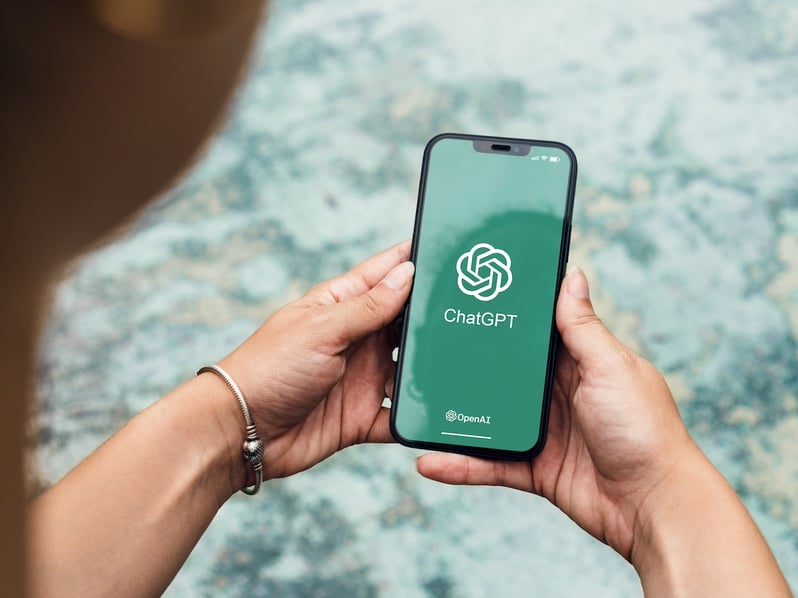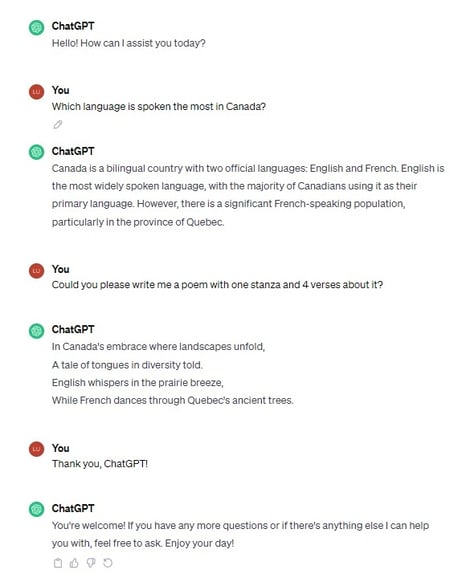
Advances in artificial intelligence are transforming the world of translation. The launch of ChatGPT has provoked a debate on its potential applications and how it could be used in the translation industry – and the range of possible uses is vast – but even ChatGPT has its limits, which means trained translators and post-editors will continue to play an important role in the localization process. Explore the fascinating subject of AI, and find out more about this balance between man and machine.
Almost everyone has heard of ChatGPT by now, the AI system made widely available by the US organization OpenAI in 2022 which has generated a considerable amount of discussion. Most people will probably have some form of experience with ChatGPT, whether it’s for active text generation (e.g. to produce a quick summary of a long, academic text) or just to see for themselves what AI is now capable of.More than 100 million people a month use ChatGPT, and that number is growing.
What is ChatGPT?
ChatGPT is a chatbot based on artificial intelligence which can answer questions, follow instructions and engage in direct, interactive communication with users. For example, you could ask “What’s the most widely spoken language in Canada?”, or you could tell it to write a four-verse poem about Canada. It would look like this:

You can have a conversation with ChatGPT about almost anything. The more detailed you make your questions/instructions, the more specific the answers ChatGPT will give, and they sound just as if they came from a real person.
How does ChatGPT work?
GPT, which stands for “Generative Pretrained Transformer”, is a language model based on machine learning. ChatGPT was trained using huge quantities of text data from the internet in order to learn the patterns and structures of natural language – a process called deep learning. So it can produce texts which, in terms of syntax, are almost indistinguishable from texts written by human beings. ChatGPT is a “generative” language model, which means it generates texts independently by predicting what’s likely to be the next word in a language sequence.
What can ChatGPT be used for?
- Answering questions: You can ask ChatGPT about a wide range of subjects, and your question will be answered within seconds. This produces a dialogue between the user and the chatbot, and ChatGPT can access and process this information as the chat continues – as long as the information was provided in the active chat, rather than in a different one.
- Producing summaries: ChatGPT can produce concise summaries of texts – no matter how long they are – almost instantly, filtering for the key information. And you can specify a maximum number of sentences, words or characters in the summary.
- Converting natural language to programming code:ChatGPT can convert descriptions of algorithms into genuine programming code, with support for SQL, Python and other programming languages.
- Generating marketing texts:ChatGPT can be used to transform short product descriptions into marketing texts that appeal to the target audience. And it can produce meta descriptions, Alt texts and captions for social media posts, including emojis and hashtags.
Is ChatGPT suitable for translations?
Unlike neural translation engines like DeepL or Google Translate, ChatGPT wasn’t specifically developed for translations. But it can translate texts, if you tell it to do so. The question is: how good are the translations produced by ChatGPT? We started by going straight to the source, asking ChatGPT to assess its own translation capabilities:
“ChatGPT is capable of producing translations to some extent, but its performance may vary. The model has not been fine-tuned specifically for translation tasks, and its primary strength lies in understanding and generating human-like text based on the input it receives. For simple and straightforward translations, ChatGPT can provide reasonably accurate results, especially for common language pairs. However, it may struggle with complex sentences, idioms, or domain-specific terminology. Additionally, the model may not always capture the nuances or cultural context present in certain phrases, leading to potential inaccuracies or awkward translations.
“For critical or professional translation needs, it's generally recommended to use dedicated machine translation models or services designed explicitly for translation tasks. These models are trained on vast bilingual datasets and have undergone extensive optimization for accurate and contextually appropriate translations.”
So ChatGPT has a very realistic and critical opinion of its own translation capabilities. It says that it can deliver reasonably accurate results, but it makes clear that the quality depends heavily on a range of factors, such as the language pair in question and the complexity of the source text. It could also have mentioned that it’s a good idea to commission a trained translator to produce the text in the required language in the first place, or to get the translation post-edited – that would put ChatGPT on the same page as MEINRAD, as we believe machine translations should always be reviewed by a professional post-editor.
Even though ChatGPT might not (at least currently) be the best option for machine translations, it has the potential to assist the text creation and translation process. Specifically, it can help with the following aspects:
- Analysing the source text: You can ask ChatGPT to analyse sections of source texts that are difficult to understand or written in convoluted language, and to rephrase them if you wish.
- Editing the MT output: ChatGPT can already rephrase (machine) translated texts to a limited extent, if you’re not happy with the output. But this won’t be up to the standard of the work done by a professional post-editor, especially if it’s a long text featuring lots of specific terminology.
- Suggesting glossary entries: You can also ask ChatGPT to suggest glossary entries based on a particular text. This could be especially helpful if you’re looking to create or populate a term base but don’t yet have a terminology list.
What do you need to look out for when using ChatGPT for translations?
- Data security OpenAI says that ChatGPT was trained to anonymize or encrypt sensitive information to ensure data privacy as a matter of principle. But the information and data you enter in a chat are saved for the purposes of training ChatGPT further, so as with other (free) MT engines, you should avoid entering confidential information as far as possible to make sure that your data are secure.
- Check the facts: ChatGPT gets its information from a variety of online sources, and it uses these same sources to answer questions or generate translations. So it’s important to check that the information contained in ChatGPT translations is true, and it’s absolutely crucial to do this for technical texts – as ChatGPT itself admits, its output should be post-edited.
- Translation style: Because ChatGPT uses a generative language model for suggesting texts, and because it accesses the material it was trained on to produce its output, the translations it offers are usually phrased very simply with basic wording. This may not be much of an issue for short, general texts, but if the text is longer and more complex, you’ll quickly notice that ChatGPT’s translations don’t flow very smoothly.
There’s an interesting dynamic when you look at the various potential applications of ChatGPT in the text creation and translation process. Although ChatGPT has its limitations in machine translation (which it acknowledges), its wide range of possible uses open up new opportunities in the translation industry, and it can – when used correctly – help make workflows faster and more effective. But one thing remains true: professional translators will always be a crucial part of the process.
Main image © Adobe Stock


